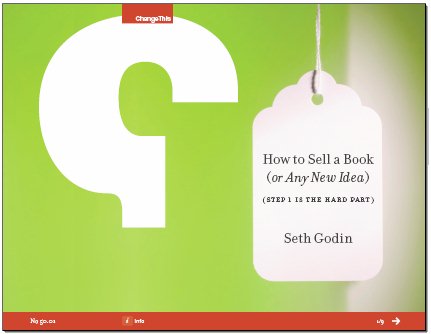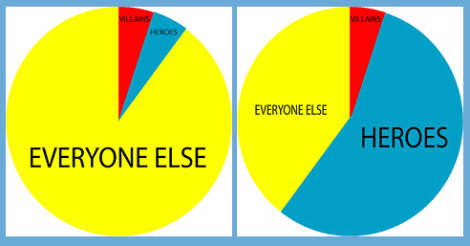In his Edge Economy column at Harvard Business Blogs, Umair Haque asks the question: how did the "unlikeliest of candidates" shatter Washington's toxic, bitter 20th century status quo to win the 2008 US election? Umair's analysis is as follows:
"The most critical part of the story is the organization Obama built: a new kind of political organization for the 21st century. It differs from yesterday's political organizations as much as Google and Threadless differ from yesterday's corporations: all are a tiny handful of truly new, 21st century institutions in the world today."
According to Umair, Director of the Havas Media Lab, Obama succeeded through the power of new DNA: new rules for new kinds of institutions. Among these new rules are:
- Self-organized design: A tightly controlled core surrounded by self-organizing cells of volunteers, donors, contributors, and other participants at the fuzzy edges. In contrast, McCain's organization was trapped by a stifling 20th century, command-and-control paradigm.
- Elasticity of resilience: Resilience is not about maximizing outputs or minimizing inputs, but the capacity to endure external turbulence and threats by growing, augmenting, or strengthening resources.
- Minimal strategy: Because it was almost entirely with strategy in its most naïve sense - such as gamesmanship, positioning, triangulation - the campaign never lost its deeply-lived sense of purpose or diluted its credibility.
- Maximal Purpose: The 21st century is about changing the world. What does "yes we can" really mean? Obama's goal wasn't simply to win an election, garner votes, or run a great campaign. It was larger and more urgent: to change the world.
Bigness of purpose is what separates 20th century and 21st century organizations: yesterday, we built huge corporations to do tiny, incremental things - tomorrow, we must build small organizations that can do tremendously massive things.
And to do that, you must strive to change the world radically for the better - and always believe that yes, you can. You must maximize, stretch, and utterly explode your sense of purpose. - True Power: The power many corporations wield is thin power: the power to instill fear and inculcate greed. True power is what Obama has learned wield: the power to inspire, lead, and engender belief. You can beat people into subjugation - but you can never command their loyalty, creativity, or passion. Thick power is true power: it's radically more durable, less costly, and more intense.
- Nothing is more asymmetrical than an idea: orget about a short-lived, often meaningless "competitive advantage". It's a concept built for the 20th century. In the 21st century, there is nothing more asymmetrical - more disruptive, more revolutionary, or more innovative -- than the world-changing power of an ideal.
Bigness of purpose is what separates 20th century and 21st century organizations: yesterday, we built huge corporations to do tiny, incremental things - tomorrow, we must build small organizations that can do tremendously massive things.
This last lesson is the starting point for tomorrow's radical innovators, believes Umair, because it's the thread that knits the others together. And it's where you should start if you want to use these rules to start building 21st century institutions - whether businesses, non-profits, social enterprises, or political campaigns.












